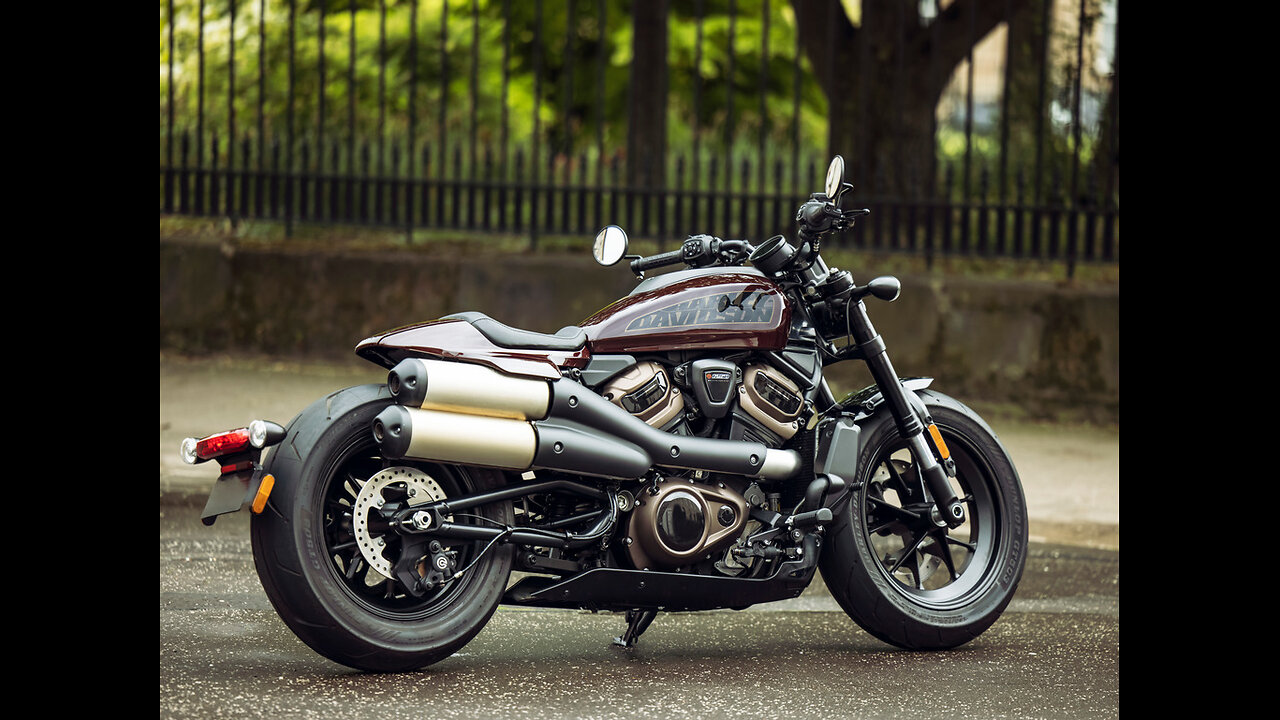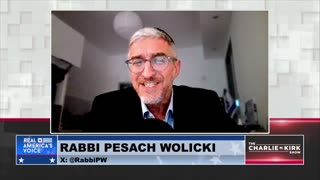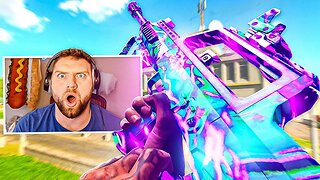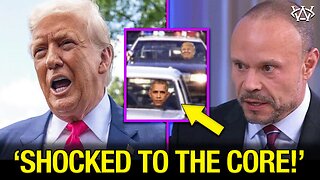Premium Only Content

Harley Davidson - Engine Sound Evolution 1903–2024
Harley-Davidson: A Ride Through History
Harley-Davidson is not just a motorcycle manufacturer; it's an American icon. From its humble beginnings in a small shed to becoming a global symbol of freedom and adventure, the history of Harley-Davidson is a captivating journey. Let's explore the milestones that have shaped this legendary brand.
Early Beginnings (1901-1903)
1901: William S. Harley, then 21 years old, draws up plans for a small engine designed to fit into a bicycle frame.
1903: William S. Harley and his childhood friend Arthur Davidson complete their first prototype in a wooden shed in Milwaukee, Wisconsin. This was the official founding year of Harley-Davidson.
First Production Models (1904-1910)
1904: The first "real" Harley-Davidson motorcycle is sold. It features a 24.74 cubic inch (405cc) engine, capable of reaching speeds up to 25 mph.
1907: Harley-Davidson incorporates and begins expanding. Arthur’s brother, Walter Davidson, joins the company. They start offering motorcycles for police use.
1909: Introduction of the V-Twin engine, a defining feature of Harley-Davidson motorcycles. This engine had a displacement of 49.5 cubic inches (811cc) and produced 7 horsepower.
Expansion and World War I (1910-1920)
1910: The iconic Bar & Shield logo is trademarked. This logo has since become synonymous with Harley-Davidson.
1914: Harley-Davidson motorcycles start gaining recognition in racing and endurance competitions.
1917: With the U.S. entering World War I, Harley-Davidson becomes a major supplier to the military. Nearly one-third of their production is dedicated to military use.
The Roaring Twenties and the Great Depression (1920-1930)
1920: Harley-Davidson becomes the largest motorcycle manufacturer in the world. They have over 2,000 dealers in 67 countries.
1929: Introduction of the 45 cubic inch (750cc) V-twin engine, also known as the Flathead, which becomes one of their most enduring designs.
Surviving the Great Depression (1930-1945)
1933: Despite the economic downturn, Harley-Davidson introduces the Art Deco styling on its motorcycles, featuring elegant paint schemes and artistic designs.
1936: Introduction of the Knucklehead engine, known for its distinctive valve covers and improved performance.
1941-1945: During World War II, Harley-Davidson produces over 90,000 motorcycles for the military. The WLA model, often called the "Liberator," becomes a wartime icon.
Post-War Boom and Cultural Icon (1945-1960)
1947: The post-war boom sees a surge in civilian motorcycle sales. Harley-Davidson releases new models to meet the growing demand.
1950s: Harley-Davidson motorcycles become associated with rebel culture, largely due to their portrayal in films like "The Wild One," starring Marlon Brando.
1957: Introduction of the Sportster, a high-performance motorcycle that becomes a staple of Harley-Davidson's lineup.
Challenges and Innovation (1960-1980)
1965: The company goes public and begins trading on the New York Stock Exchange.
1969: Harley-Davidson merges with the American Machine and Foundry Company (AMF), a move intended to improve financial stability but results in a period of quality control issues and declining sales.
1971: The FX Super Glide is introduced, blending the Sportster front end with the chassis of the larger twin-engine models, creating the first factory custom motorcycle.
The Harley-Davidson Rebirth (1980-1990)
1981: A group of 13 investors, including Willie G. Davidson, grandson of one of the founders, buys Harley-Davidson back from AMF, starting a revival period for the company.
1983: Introduction of the Harley Owners Group (HOG), a community for enthusiasts that becomes one of the largest factory-sponsored motorcycle clubs in the world.
1984: Launch of the Evolution engine, which modernizes Harley-Davidson's engineering and significantly improves reliability and performance.
Modernization and Global Expansion (1990-2000)
1990: Harley-Davidson introduces the Fat Boy, an instant hit that blends modern technology with classic design elements.
1993: The company celebrates its 90th anniversary with a grand rally in Milwaukee, attracting hundreds of thousands of fans.
1998: Harley-Davidson opens a new manufacturing plant in Kansas City, Missouri, to meet the growing global demand.
The 21st Century and New Challenges (2000-Present)
2001: Harley-Davidson releases the V-Rod, featuring the company’s first production liquid-cooled engine, developed in collaboration with Porsche.
2003: The 100th anniversary is celebrated with events worldwide, culminating in a massive rally in Milwaukee.
2006: Harley-Davidson acquires MV Agusta, an Italian motorcycle manufacturer, to expand its presence in the European market. (They later sell it in 2010.)
2014: Introduction of the LiveWire, Harley-Davidson’s first electric motorcycle, marking a significant shift towards sustainable technologies.
2020: Harley-Davidson faces financial challenges and shifts strategy under new leadership to focus on core markets and models.
2021: The Pan America is launched, Harley-Davidson's first adventure touring bike, representing a bold entry into a new segment.
Key Figures in Harley-Davidson’s History
William S. Harley: Co-founder and chief engineer, instrumental in the technical and design advancements of the motorcycles.
Arthur Davidson: Co-founder and sales strategist, he helped build the brand and expand its dealer network.
Walter Davidson: Co-founder and first president, who steered the company through its early years and war periods.
William A. Davidson: Joined his brothers and played a key role in manufacturing and production processes.
Willie G. Davidson: Grandson of the founders, a legendary designer who played a pivotal role in preserving and modernizing the Harley-Davidson brand.
Harley-Davidson's Cultural Impact
Harley-Davidson motorcycles have transcended their role as mere vehicles, becoming symbols of freedom, rebellion, and American heritage. They are deeply embedded in popular culture, from movies and music to the distinct lifestyle associated with Harley riders. The Harley-Davidson story is not just about motorcycles; it's about a legacy of innovation, resilience, and an enduring connection with the open road.
Single Cylinder F-Head 1903
V- Twin 1909-1911
F-Head 1911- 1929
Flathead 1929-1973
Knucklehead 1936-1947
Panhead 1948-1965
Ironhead 1957-1985
Pan-Shove 1966-1969
Shovelhead 1966-1984
Evolution 1984-1999
Twin Cam 1999-2017
Revolution 2002-2017
Mileaukee Eight 2017
Revolution Max 1250T 2021-2024
-
 2:07:13
2:07:13
Steven Crowder
4 hours ago🔴Game Over: Trump's EU Trade Victory Shows How Stupid "Experts" Really Are
309K149 -
 20:03
20:03
Neil McCoy-Ward
1 hour agoTHE UK 🇬🇧 JUST ENDED 140 YEARS OF FREE SPEECH! (How Did It Come To THIS?!)
3.87K2 -
 1:56:26
1:56:26
The Charlie Kirk Show
2 hours agoTHE CHARLIE KIRK SHOW IS LIVE 07.28.25
35K8 -
 LIVE
LIVE
JuicyJohns
5 hours ago🟢#1 REBIRTH PLAYER 10.2+ KD🟢 !loadout
782 watching -
 52:11
52:11
Anthony Pompliano
2 hours agoWhy Bitcoin Will EXPLODE During The AI Era
14.1K1 -
 1:06:00
1:06:00
The Rubin Report
3 hours agoMajor Company’s Must-See Ad May Be the Official Death of Woke
39.4K51 -
 LIVE
LIVE
Robert Gouveia
2 hours agoBongino's "SHOCKING" Bombshell! Peter Strozk PANIC! Trump Assassin Case! Climate Change PLOT!
1,260 watching -
 LIVE
LIVE
LFA TV
18 hours agoLFA TV ALL DAY STREAM - MONDAY 7/28/25
2,797 watching -
 48:37
48:37
Grant Stinchfield
2 hours agoImporting Capital, Not Chaos: The Pro-America Visa
8.02K -
 1:09:11
1:09:11
Flyover Conservatives
13 hours agoTRUMP’S $1.9 TRILLION TRADE BOMBSHELL—EU & JAPAN BOW TO THE DEALMAKER - Dr. Kirk Elliott; Are We Watching History Repeat? Nazi Playbook vs. Modern Democrats | FOC Show
14K3